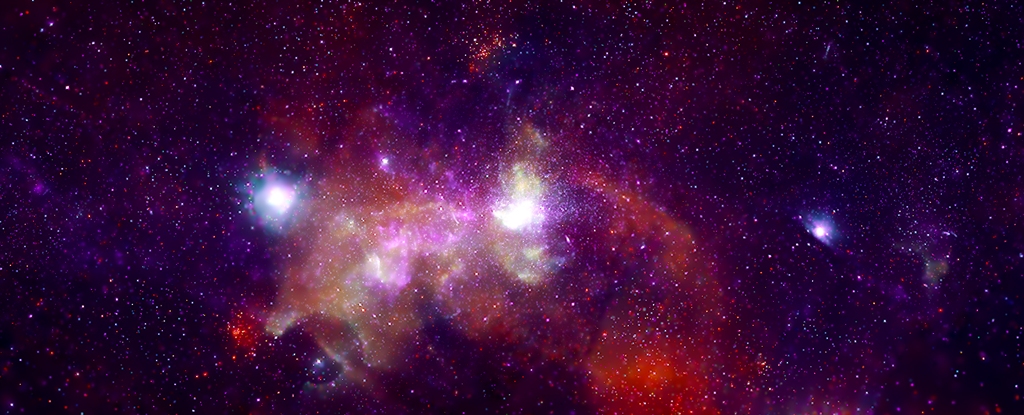
If only we could see it being From the outside (we are now inside, and we are part of it), we will see that the galaxies resemble the foam made by the sea. Like large pieces of foam stuck to the surface of seawater, galaxies also appear to be stuck in a primordial ocean. They do not have a specific shape. Yet it sparkles with starlight. It’s like a network of glowing foams clustered together in irregular shapes. There are dark spots between them. black holes. Or rather, so that there is no confusion, there are black spaces between them.
It took eons to create the universe. The big explosion sent huge amounts of hot white particles spewing into space. These, as they were heated, “merged” with the help of gravity. This is how galaxies were formed. But it took billions of years to do so.
Billions of years is a long time. But physicists at the University of Michigan want to shorten that time frame even further. Nhat Minh Nguyen, Dragan Hutterer and Yue Win believe that if they do this, they will be able to solve one of science’s biggest problems. How was the world created? They don’t want to speed up the process and record the movements of stars and cosmic matter to learn how galaxies form.
as mentioned Science AlertNotice that as the years go by, the universe expands. And even at an ever-increasing rate. There’s something that doesn’t make anything grow. There is space. Gaps between galaxies. Well, this is getting bigger. Because we do not know what is behind this growth, and what kind of force, we call it dark energy.
Nguyen is the leader of the three physicists’ research into how the universe evolves into large-scale structures. And as he says “If gravity acts as an amplifier for the perturbations that matter undergoes to grow into large-scale structure, then dark energy acts as a shock absorber that dampens these perturbations and slows the growth of the structure.». “By looking at how cosmic structure accumulates, merges and grows, we can try to understand the nature of gravity and dark energy,” he says.
The exact rate of expansion, known as the Hubble constant (H0), is not at all clear. By measuring the way some types of stars explode and recede over vast distances, an acceleration of 74 kilometers per second per megaparsec (million parsecs) can be obtained. But even this measurement, according to experts, may not be completely accurate. Some other measurements give an acceleration of 67 kilometers per second. The difference, seven kilometers per second, is something that cannot be dismissed as a simple error.
The three physicists (Nguyen, Hutterer, and Winn) approach the flat cosmology model (the ΛCDM consensus, which wants the shape of the universe to be flat) differently. They consider that this model may be a source of false assumptions.
If cosmology were a chess game, this would be the chessboard and the pawns, which would be arranged by general relativity and driven by the push of dark energy, while being aligned by the gravitational effects of dark energy and matter.
Now, if we stick to chess, we can see how the game began, that is, how the world was shaped. In the blink of an eye, an explosion occurs and the stars begin to fall. Thus we reach the formation of galaxies and their eventual appearance in the form of giant interconnected spirals.
If for some reason this process deviates from what the consensus model predicts, and prevents the growth of the universe’s large-scale structure, the tension between different measurements of the universe’s accelerating expansion will disappear.
The researchers used a combination of measurements of fluctuations in the cosmic web, gravitational events, and details in the cosmic microwave background to reach the statistically convincing conclusion that the cosmic web is growing more slowly than the flat cosmology model predicted. ).
“The difference in growth rates that we may have detected becomes more pronounced as we get closer to the present day,” Nguyen says. “These different detectors individually and collectively point to a suppression of the growth of the universe. Either we are missing some systematic error in each of these detectors, or we are missing some new and late laws of physics in our current model,” he says.
Although there are no clear “candidates” for what might be hindering the growth of the cosmic web, future measurements of the large-scale structure of the universe could at least indicate whether the idea is needed to be investigated further.
It took the universe 13.7 billion years to obtain this goodness. We can wait a few more years to discover the rest of its secrets.
This research was published in Physical review letters.

“Total alcohol fanatic. Coffee junkie. Amateur twitter evangelist. Wannabe zombie enthusiast.”





More Stories
Is this what the PS5 Pro will look like? (Image)
Finally, Windows 11 24H2 update significantly boosts AMD Ryzen – Windows 11 performance
Heart Surgeon Reveals The 4 Things He ‘Totally Avoids’ In His Life